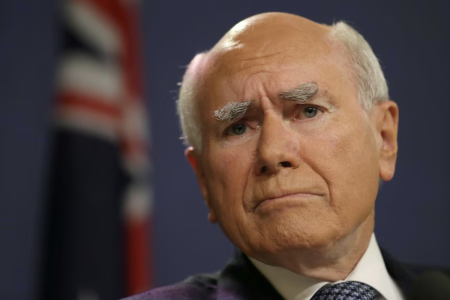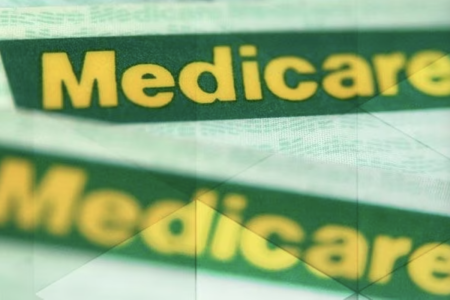Is private health insurance worth it? What to weigh up at tax time
By
ABC News
- Replies 6

Private health care is becoming less and less desirable for younger Australians as costs rise for funds. Image source: ABC News.
As Australians prepare to do their tax returns and take stock of their financial affairs, those with and without private health insurance may be considering whether their cover is worthwhile.
For many, it's not just a question about accessing the private health system — it can also be a maths equation that takes into account the tax penalties for not having coverage, if you earn above certain thresholds.
For about 15 million Australians, private health insurance premiums jumped in April, after the federal government approved the biggest annual average premium hike in seven years.
So, is health insurance a good deal for you? Here's what to consider when weighing it up.
What's the purpose of private health insurance?
Australia's private health system is meant to complement Medicare by taking pressure off the public system.
People who can afford it are incentivised to be treated privately, with shorter wait times for elective surgeries and the ability to choose their doctor.
Successive governments have implemented policies designed to push people into the private system — like the Medicare Levy Surcharge (MLS).
But the system is under strain as Australia's population ages, placing more pressure on public hospitals and increasing reliance on private health insurance.
A report by EY for the federal government in 2023 found that for those aged over 75, average hospital claims were over $7,000 per person, while for 40–45-year-olds, the average hospital claim was about $850 per person.
By 2064–65, nearly one-quarter of the population is projected to be aged 65 and over.
"There are a lot of benefits and a lot of strengths of the private system," said Stephen Duckett, an honorary professor at the University of Melbourne and former secretary of the federal health department.
"We must remember what it does; it's essentially a mechanism to allow elective procedures to be done."
To ensure they remain profitable, insurers have stripped back coverage, increased excess payments and hiked prices, leaving many Australians wondering if taking out cover is necessary.
Is private health worth it?
The answer depends on your income, age and health needs.Professor Duckett says for young, healthy Australians, private health insurance often provides little value.
Some policies, he says, offer minimal benefits but are strategically priced just below the MLS threshold, enticing people to buy coverage that does little beyond avoiding a tax penalty — essentially, "junk insurance".
The MLS is a tax that's been around since 1997 and is designed to encourage higher-income earners to take out private hospital cover.
The tax ranges from 1 per cent to 1.5 per cent of income and kicks in once individuals earn above $97,000 or couples/families earn above $194,001.
Medicare surcharge for singles 2024-25
Tier | Income Range | MLS Rate |
| Base Tier | $97,000 or less | 0.00% |
| Tier 1 | $97,001-$113,000 | 1.00% |
| Tier 2 | $113,000-$151,000 | 1.25% |
| Tier 3 | $151,001 or more | 1.50% |
ABC / Source: Australian Taxation Office / Get the data
Medicare surcharge for families 2024-25
Tier | Income Range | MLS Rate |
| Base Tier | $194,000 or less | 0.00% |
| Tier 1 | $194,001-$226,000 | 1.00% |
| Tier 2 | $226,001-$302,000 | 1.25% |
| Tier 3 | $302,001 or more | 1.50% |
Professor Duckett said the MLS was "a strange concept [for] a private market".
"It is quite bizarre that we say this product is so bad that we want to force you to take it out," he said.
"Remember, the purpose of this is to force people into private health insurance who will not use the product at all, so that the risk pool is improved."
Individuals can work out how much their MLS would be using the ATO's calculator.
Whether your spouse and any dependent children have private hospital cover also affects your liability for the MLS.
The surcharge is calculated when you process your tax return each year, rather than covered in your employer tax withholding, so may affect the amount of any tax refund or add to a tax bill.
It's also based on the number of days you hold cover for, so if you don't have coverage for the full financial year, you may still end up paying tax.
Greg Jericho, chief economist at The Australia Institute, said the private healthcare system was struggling "because it is not attractive to those who are least likely to need it, and [those people] are also the most likely to be profitable".
In his opinion, private health insurance was not a good option for young Australians.
"Possibly if they are in competitive sports and at higher risk of needing knee or shoulder surgery. But otherwise, there is no real need."
He also said junk insurance policies had become more common.
"In 2000, around 3 to 4 per cent of private health insurance policies had exclusions — now it is around 65 per cent.
"Similarly, we have gone from around half of all policies having excess payments to now around 85 per cent.
"So there are many more policies that don't cover much and which require co-payments should they be used."
What is Lifetime Health Cover (LHC) loading?
Introduced by the Howard government, Lifetime Health Cover (LHC) loading penalises those who don't take out private hospital cover by age 31.The penalty is an extra 2 per cent for every year someone does not have cover after age 31. It's capped at 70 per cent and removed after 10 years of continuous cover.
Before this policy, only 30 per cent of people in their 30s had private health insurance. A campaign titled Run For Cover boosted this figure to 50 per cent, but uptake has since dropped back down, according to Mr Jericho.

The last major attempt to reform the private health industry occurred during the Howard years. Image source: AAP / David Moir.
Mark Blades, an insurance analyst from Choice, warns that LHC loading often catches people off guard in their 40s.
"You didn't get it in your 20s because you were healthy, you didn't get it in your 30s because you couldn't afford it, and then in your 40s, you finally look at it," he said.
For example, a 41-year-old who first takes out private cover would be hit with a 20 per cent LHC loading on their premium.
But he said in most cases, it works out better for people to just pay the loading when they need health insurance, rather than take out a basic policy to avoid it later in life.
"Basic cover is essentially overpriced for what you're getting because you're getting very, very little," he said.
Mr Jericho said many people did "not see actual value in private health insurance and are merely taking it out to avoid penalties".
"Private health insurance is not like house insurance, because if the worst does occur, the public system will likely be your first port of call and you will be covered."
Once someone is over 31 years old and earns above $97,000 a year, a double whammy comes into play — the MLS if you don't have hospital cover, and the lifetime loading.
Mr Blades said those earning above the threshold could take out a cheap cover to save a couple of hundred dollars, but he warned it would likely be "a product you can't really use".
What about the government rebate?
The government contributes about $7.5 billion annually to subsidise private health insurance through a rebate program.The rebate is means-tested and ranges from about 8 per cent to 32 per cent, depending on income and age.
Individuals earning more than $151,001 and couples earning more than $302,001 are not eligible.
However, it has been progressively reduced in recent years due to rising medical costs and Australia's aging population.
Government rebate
| Income | Base Tier | Tier 1 | Tier 2 | Tier 3 |
| Singles | $97,000 or less | $97,001-$113,000 | $113,001-$151,000 | $151,001 or more |
| Couples/ Families | $194,000 or less | $194,001-$226,000 | $226,001-$302,000 | $302,001 or more |
| Private Health Insurance Rebate effective from April 1, 2025 |
|---|
| Base Tier | Tier 1 | Tier 2 | Tier 3 | |
| Less than 65 years | 24.3% | 16.2% | 8.1% | 0% |
| 65-69 years | 28.3% | 20.2% | 12.1% | 0% |
| 70 years+ | 32.4% | 24.3% | 16.2% | 0% |
The rebate is indexed and was dropped last year by a few percentage points.
And it dropped again this year from 24.6 per cent to 24.3 per cent.
If you need it — shop around
While big health insurers tend to make it difficult for people to drop their policy and pick up a new one (due to waiting periods and losing unused benefits, for example) — especially for top-tier cover — it's worth checking what you're covered for and shopping around.There is a range of websites comparing the market, including from the government, that help consumers look up the details of exactly what their policy covers — called a Private Health Insurance Statement — and compare policies across all health insurers in Australia.
Factors worth weighing up include waiting periods and exclusions. Also, some policies require you to take out extras as well as hospital cover.
If you are considering a cheap hospital policy to avoid tax penalties, Choice's Mark Blades says you need to consider extra costs that could come into play if you do need to make a claim.
"If you did use it, you would be out of pocket from paying the excess, which is usually about $750 for basic cover, and pay gap fees.
"You could argue it's better to be in the private system, but there are so few procedures that will apply to you anyway that it's just a junk policy."
Disclaimer: The information in this article is general in nature. If you need personalised advice, please see a professional.
Written by: Rachel Clayton, ABC News.









